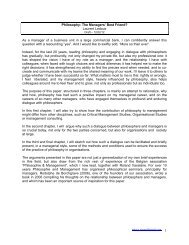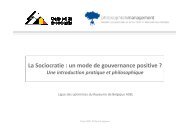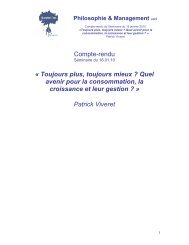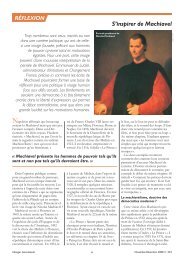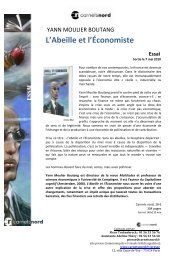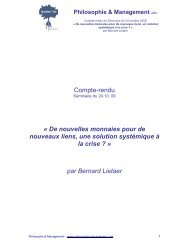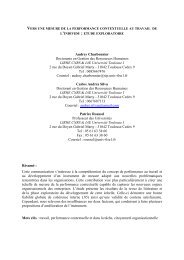The $100 billion question - Signal Lake Venture Fund
The $100 billion question - Signal Lake Venture Fund
The $100 billion question - Signal Lake Venture Fund
Create successful ePaper yourself
Turn your PDF publications into a flip-book with our unique Google optimized e-Paper software.
In making these choices, economists have often drawn on Martin Weitzman’s classic public<br />
goods framework from the early 1970s. 13 Under this framework, the optimal amount of pollution<br />
control is found by equating the marginal social benefits of pollution-control and the marginal<br />
private costs of this control. With no uncertainty about either costs or benefits, a policymaker<br />
would be indifferent between taxation and restrictions when striking this cost/benefit balance.<br />
In the real world, there is considerable uncertainty about both costs and benefits. Weitzman’s<br />
framework tells us how to choose between pollution-control instruments in this setting. If the<br />
marginal social benefits foregone of the wrong choice are large, relative to the private costs<br />
incurred, then quantitative restrictions are optimal. Why? Because fixing quantities to achieve<br />
pollution control, while letting prices vary, does not have large private costs. When the marginal<br />
social benefit curve is steeper than the marginal private cost curve, restrictions dominate.<br />
<strong>The</strong> results flip when the marginal cost/benefit trade-offs are reversed. If the private costs of the<br />
wrong choice are high, relative to the social benefits foregone, fixing these costs through taxation<br />
is likely to deliver the better welfare outcome. When the marginal social benefit curve is flatter<br />
than the marginal private cost curve, taxation dominates. So the choice of taxation versus<br />
prohibition in controlling pollution is ultimately an empirical issue.<br />
To illustrate the framework, consider the path of financial regulation in the US over the past<br />
century. <strong>The</strong> US announcements in January are in many respects redolent of US financial<br />
reforms enacted during the late 1920s and early 1930s. <strong>The</strong>n, restrictions were imposed on both<br />
bank size and scope, in the form of the McFadden (1927) and Glass-Steagall (1933) Acts. <strong>The</strong><br />
history of both, viewed through Weitzman’s lens, is illuminating for today’s debate.<br />
<strong>The</strong> McFadden Act (1927) in the US gave nationally-chartered banks broadly the same branching<br />
rights as state banks within the state. But it also confirmed the effective prohibition on national<br />
banks opening new branches across state lines that had previously been implicit in the US<br />
National Banking Act (1864). It covered a wide range of banking functions, including deposittaking<br />
and brokerage.<br />
<strong>The</strong> motivation behind the Act appears to have been in part political, reflecting lobbying by small<br />
unit banks under threat from larger competitors. But it also had an economic dimension, as a<br />
_____________________________________________________________________________<br />
13<br />
Weitzman (1974).<br />
7



